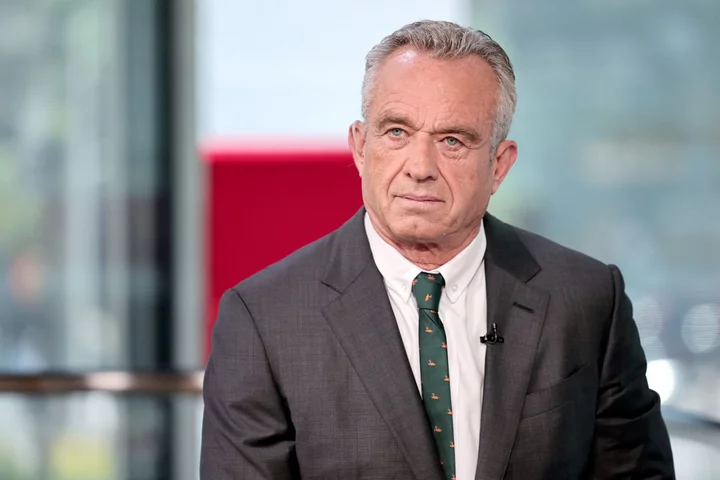No place in the US has put inflation in the rearview mirror quite as fast as Minneapolis.
In May, the Twin Cities became the first major metropolitan area to see annual inflation fall below the Federal Reserve’s target of 2%. Its 1.8% pace of price increases was the lowest of any region that month.
That’s largely due to a region-wide push to address one of the most intractable issues for both the Fed and American consumers: rising housing costs. Well before pandemic-related supply-chain snarls and labor shortages roiled the economy, the city of Minneapolis eliminated zoning that allowed only single-family homes and since 2018 has invested $320 million for rental assistance and subsidies.
That helped unleash a boom in construction of apartments and condos in the region that proved to be a powerful antidote against inflation, given that the cost of shelter accounts for more than a third of the overall US consumer-price index. Minneapolis shelter prices were up at half the nation’s annual pace in May.
“I can’t tell you how many people were like, ‘Oh, look at all this supply, look at all these just brand new buildings,’ and kind of scoffing at it like this was going to lead to gentrification or rents skyrocketing,” said Minneapolis Mayor Jacob Frey, a two-term Democrat, in an interview. “The exact opposite has happened.”
The housing initiatives — including the Itasca Project, an alliance of the business, philanthropic and public sectors in the region pushing for at least 18,000 new housing units per year through 2030 — have picked up where the Fed’s monetary tightening leaves off, demonstrating the role state and local policies can play in curbing inflation.
They also show how a regional economy can get a boost when politicians are able to temper opposition to new building, sometimes part of the “not in my backyard,” or NIMBY movement. Local backlash has squashed projects from California to New York, where an ambitious plan by Governor Kathy Hochul to add about 800,000 units of housing over the next decade fell apart in April after resistance from suburban areas.
Rent growth in Minneapolis since 2017 is just 1%, compared with 31% in the US overall, according to the Pew Charitable Trusts. Its share of affordable rental units and ratio of rent to income are better than most comparable US metro areas.
“There is no more effective way to rein in inflation than to expand the supply of affordable housing and increase housing affordability,” said Moody’s Analytics chief economist Mark Zandi.
The mayor’s approach to housing has drawn opposition, including legal action based on environmental concerns and complaints about multifamily rental units next to single-family homes. And in the city that was shaken by the 2020 police killing of George Floyd, inequality remains entrenched, with residents of color remaining nearly twice as likely to be living in households burdened by shelter costs as White residents.
In the Twin Cities of Minneapolis and St. Paul, “it just keeps coming back to this housing story,” said Peter Frosch, the chief executive officer of the Minneapolis Saint Paul Regional Economic Development Partnership. “To the extent that we’re interested in continuing this performance around managing costs, we have to stay focused on housing.”
Government data due Thursday will provide further insights into the trajectory of inflation across the US. The CPI report is projected to show annual inflation re-accelerated to 3.3% nationwide in July as some price pressures prove sticky.
Currie Commons is a 187-unit complex under construction in the Harrison neighborhood of north Minneapolis, where the poverty rate exceeds 30%. A quarter of the apartments will be reserved for those making less than 30% of area median income — or $35,500 for a family of four. The four-story property will include a rooftop deck with a view of the city skyline and a large community area.
David Wellington, its developer, said such projects have more complicated financing and take longer to build than apartments with market-rate rent.
But “we feel pretty strongly that the demand for these units is there and needs to be served,” said Wellington, co-owner of Wellington Management Inc.
Across the Mississippi River in St. Paul, on a 122-acre site where a Ford Motor Co. assembly plant once stood, a mixed-use development is going up with 20% of the housing reserved for lower-income renters.
These are the kinds of projects that are typical of the area’s recent surge in multifamily housing.
The Minneapolis region got authorization to build about 14,600 multifamily buildings last year, ranking 11th out of 51 peer metro areas in permits per capita in that category in 2022, according to Bloomberg calculations using Census Bureau data.
Having more units available that lower-income residents can afford helps the people who have been most impacted by inflation, said Cathy Capone Bennett, executive director of the Twin Cities Housing Alliance.
The growth has also created more options for residents like Gina Kowalczyk, an elementary school teacher who moved to the region in June and didn’t think she’d be able to afford a one-bedroom apartment in the suburb of Minnetonka.
“The location, the amenities, the building, the fact that it’s brand new, I was very surprised that it was so affordable for me,” Kowalczyk, 51, said in an interview at her apartment in Wellington’s new Townline complex.
The housing initiatives have not all worked the way policy makers intended. Critics say a stringent rent-control policy implemented in St. Paul in 2021 has chilled development of some projects because the financing no longer worked when the rents would be capped for years to come.
The push also has not erased some persistent housing problems. When comparing Black households and White households, the Twin Cities had the highest difference in homeownership rates and housing cost burden of any similar-sized metro in 2021.
That disparity is “the stain on this region,” said Adam Duininck, director of government affairs at North Central States Regional Council of Carpenters.
At the same time, high costs for groceries and other goods can make it hard for Minneapolis residents to notice the favorable conditions in the housing market. Food prices in the metro area rose 6.8% in May over the year, federal data show.
Still, Minneapolis had one of the lowest “misery” rates, a Bloomberg calculation using inflation plus unemployment data from the US Bureau of Labor Statistics, of 21 metro areas in May and June. A major drop in utility prices since last year has contributed to its improving inflation picture.
The Twin Cities benefit from some unique characteristics: The area has a high concentration of Fortune 500 companies, including Target Corp. and US Bancorp. While peer metro areas including Dallas, Phoenix and Jacksonville saw a mass influx of residents in recent years that sparked demand shocks in the local housing markets, the Twin Cities population has remained close to 3.7 million people.
“The Twin Cities has historically been an affordable housing market relative to the nation,” said Ron Feldman, vice president at the Minneapolis Fed and co-chair of the Itasca Project. “We’re trying to make sure we keep it that way.”
--With assistance from Alexandre Tanzi.









